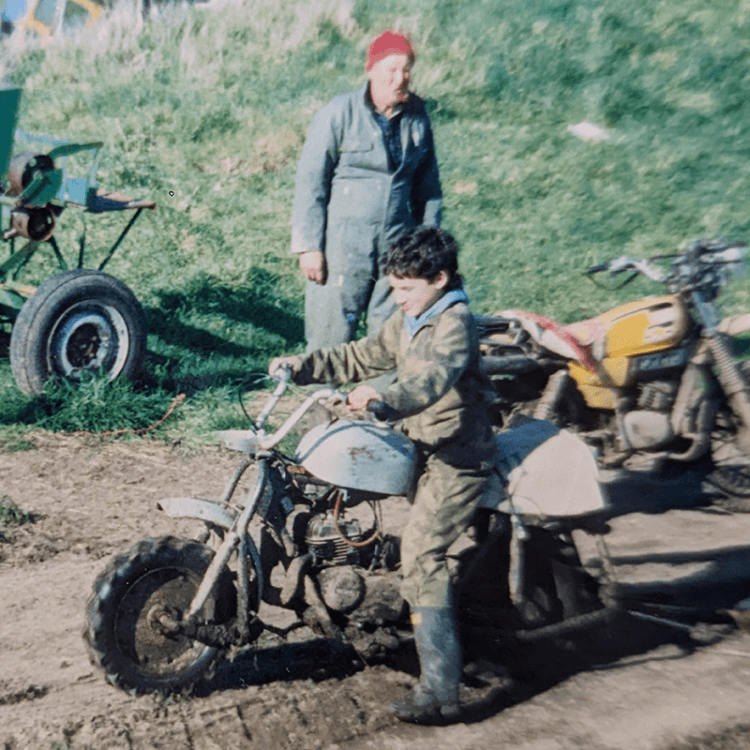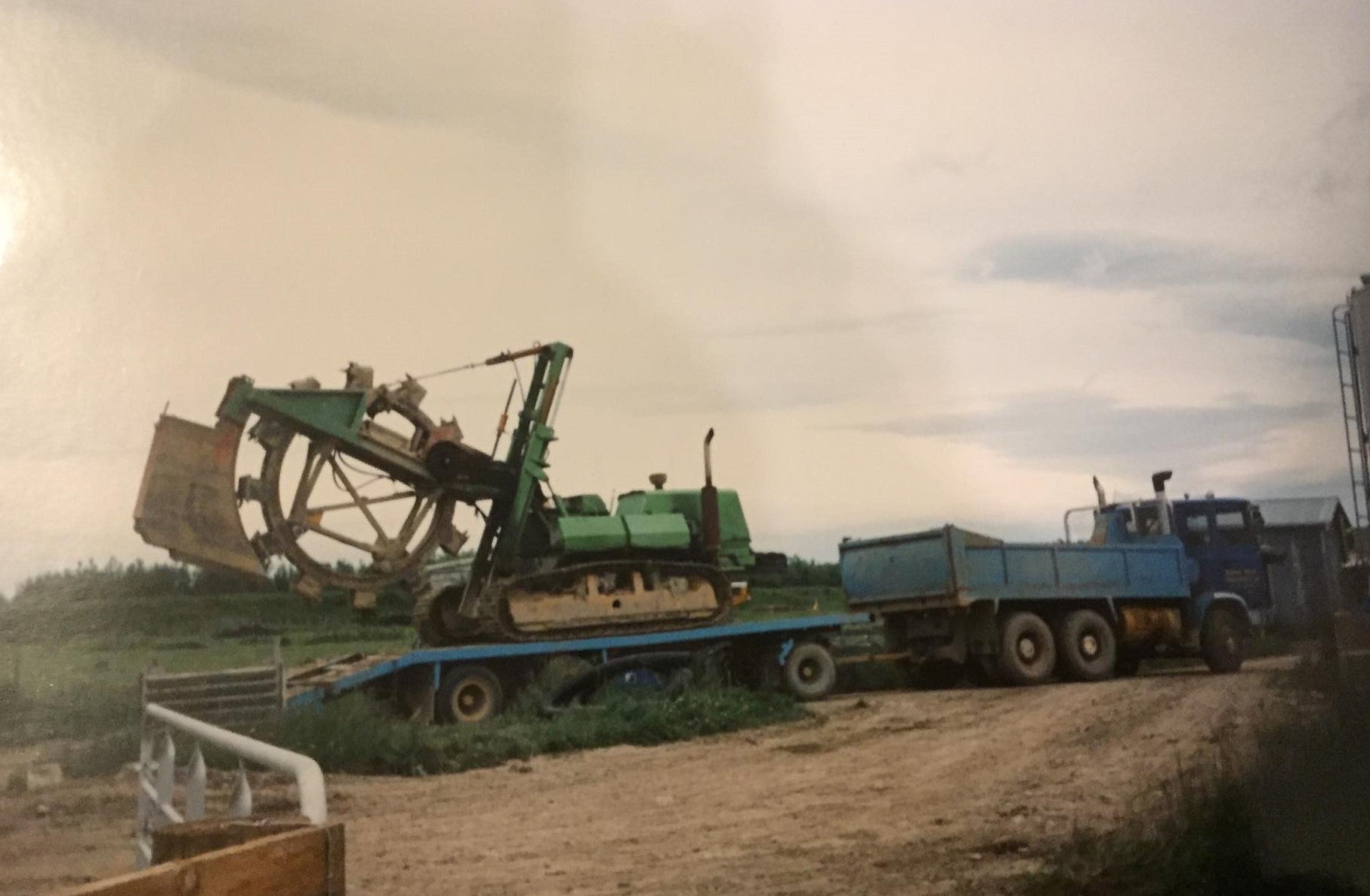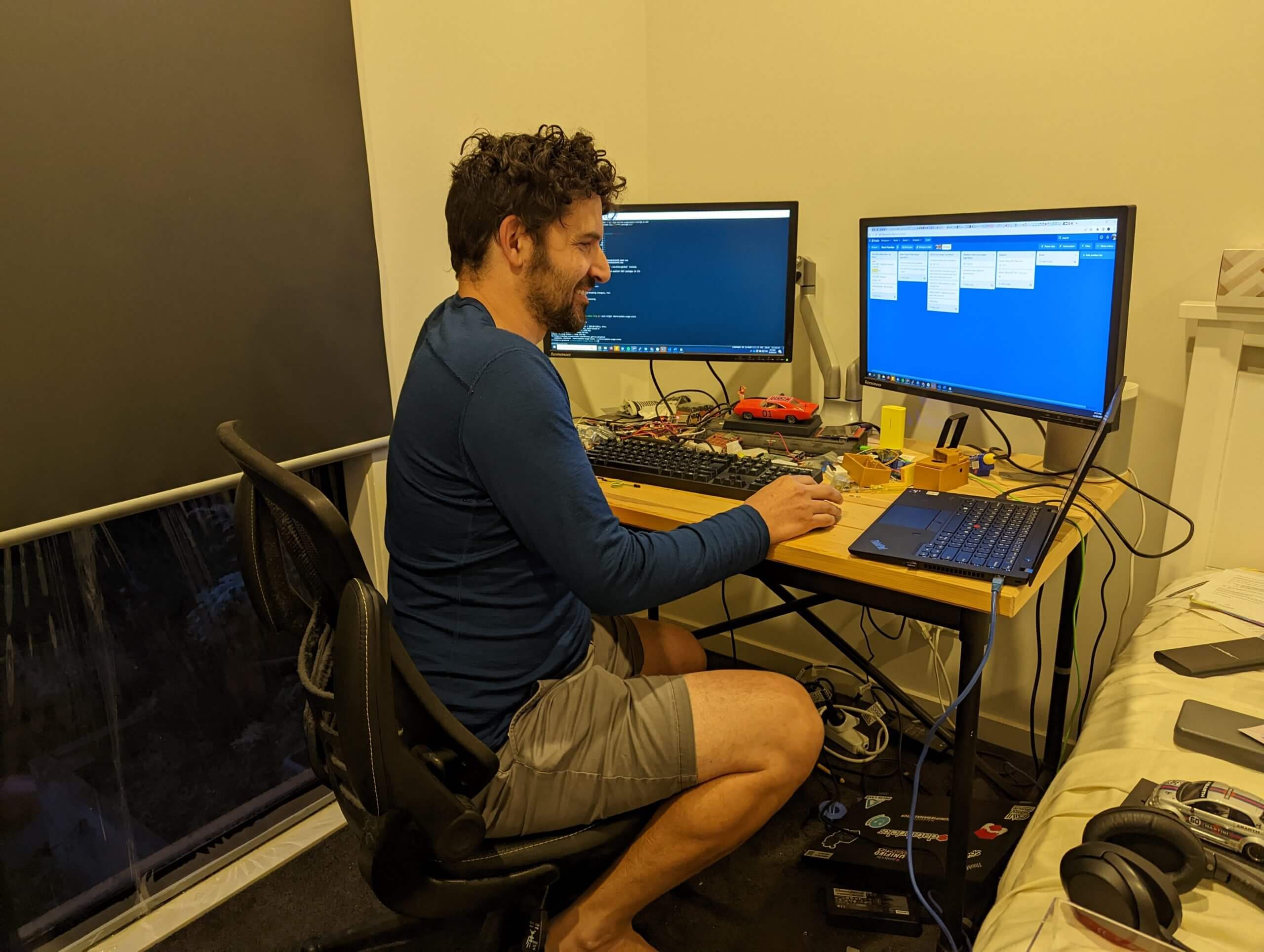Carl Hickton is a man bursting with ideas. He is a borderline genius who, with the exception of “stop” and “poison,” couldn’t read until his early 20s. He is a problem seeker and problem solver, and it’s always been that way – from his childhood on his grandad’s farm, to his adolescence and early adulthood in the trades, to his career as a principal engineer at Nintex. To say that the way his mind works and how he meandered to a career in tech is fascinating, would be a gross understatement.
Carl has always wanted to know how things work. It’s constant for him. When he was about eight years old, he accidentally figured out how to take out the power by simply using a battery charger and manipulating electrical surges down the line. He says nonchalantly, “it was handy for school,” a requirement he passionately despised and masterfully circumvented throughout his youth.
Carl grew up on a farm where he and his grandad did it all together. “On a farm, things go wrong all the time, you literally have to fix everything yourself.” Their fixes were driven by the number 8 wire mentality which Carl describes as an “old school Kiwi thing,” a source of pride, and something that would fix anything. He remembers his first motorbike on which the engine blew up. They put a new fuel tank on, but once mounted, the fuel line didn’t work. Carl wondered out loud what would happen if we put it on backwards,” so they did. And it worked. That wasn’t the beginning or the end of Carl’s magically weird ideas, and they didn’t start or stop with grandad or a number 8 wire.

From “how does it work?” to building from scratch
“My stepdad was the hardest worker I knew”. Up before dawn and going well beyond dusk in the field of agricultural drainage, his work was crucial to maintain the water level for farmland built on a former swamp that characterized the region. He was also a tinkerer and a dreamer – he’d find things laying around on the farm, in scrapyards, a random truck, other machines, wherever. He’d design and build his own trencher, rock crusher, and all sorts of things for the job.

“If a part broke on the trencher, we’d grab paper and a pen, sketch it out, then make the 8hr trek to Auckland to wreckers (who dismantle machines) for matching parts.”
Another heavily depended-on machine, bought versus self-built, was a Mitsubishi excavator. When the excavator was having issues, Carl and his stepdad were paid a visit by a group of Japanese engineers to help figure it out.
“I can see them now, standing in their white coats in the muck and mire of our rural New Zealand farm, marveling not at the Mitsubishi machine, but rather the excavator my stepdad built from scraps. A feat of engineering at the time, really, his laser level controlled the depth of hydraulics and locked in place for forward motion. The Mitsubishi guys were amazed!”
Carl loved helping his stepdad build and improve various machines and work to solve problems, and while this was often yet another reason for many days of missed school, it was exactly this practical, imaginative and inspired experience he had in his youth that fostered his brand of genius.
“I was fortunate to be brought up by really creative people. Not classically creative – but builders.”
Even in early adulthood Carl worked on a race car under a rather grumpy and intelligent former Nascar mechanic. He just wanted to figure out all the ways he could make the car go faster. He experimented with pouring extra oxygen into the engine to augment combustion. He increased resistance on the wire to get a higher volume of fuel in the engine more quickly and installed a gear stick to select the max fuel option. He never stopped tinkering or solving and always pursued the “what if’s”.
Computers are just “like Lego, man!”
Then, Carl shattered his wrist and his work as a mechanic abruptly stopped. As a guy who had been driven and shaped by seeking problems to solve, naturally his first move was to singlehandedly (quite literally) take apart a scooter in his lounge. The next day, he did the same thing, but this time with his flat mate’s computer. Every. Single. Last. Part. Dismantled.
“One of my flat mates was a student and had a super expensive computer for his studies. I just wanted to see how it worked. I pulled out everything, down to the little purses in the sockets. There was nothing left that could be unplugged or taken apart. He came home and was in total shock – terrified – racing around trying to figure out how he’d ever get the thing back together. I said, “I can put it back together, it’s like Lego, man!” And I did.”
Several weeks into receiving partial wage compensation for lost work, Carl couldn’t cover rent anymore. His wrist was beginning to heal and he had to get back to earning money. He took a cash job, picking cabbage, lettuce and pumpkins for morning markets. He then did some forestry work – pruning trees and such. Then, the government pushed him to do a training course to help him work towards finding a steady job, so he picked Intro to Word Processing.
“I was quite excited about the whole thing, getting to use a computer. On day 1, I discovered the mouse. Curious as to how it worked, I took the ball out and lobbed it. When the teacher said I had to log in by wiggling the mouse, I couldn’t of course. While I didn’t learn much about computers from the course, I knew I enjoyed using them.
The elusive creation of a tech developer
Carl’s first job in tech was in web development in the early 2000s. His friends, who all built houses or worked on cars and could see the tangible results of their work, were a bit miffed with “I built a website.” They spent many nights at the pub debating how you could build something that nobody could really see or feel – was it even real? Carl quickly learned why he enjoyed tech so much, despite it not being a ‘real’ thing.
“I loved and still love that IT is fast-moving, always changing – I think it’s why my friends were a bit baffled at first with the website thing, it was so new at the time. I’ve been a builder, a plumber, an electrician, a mechanic… Things only change once in a while – and slowly.
In tech, there are lots of things that change. It’s always evolving, there are infinite new ways to do things, new ideas, new concepts. Nothing stays the same. But, I could show you an error message from the first time I used a computer and it’s still the same on today’s machines!”
Carl is an error seeker. Filling up his head with a range of potential fixes. That’s how he learned and how he continues to be a superb ideator. He’s perpetually beta-testing everything. And, while in his words he’s “not very good with humans,” he is constantly thinking about the human experience of the products he develops versus exclusively the features or fabulous pieces of code that power them. He says, “as an engineer, the customer experiences the sum of your actions and this is the way you have to break down problems.”

But to Carl, problems are simply shining opportunities for solutions. Challenges to be conquered. Not negative and certainly never insurmountable.
The life (and work) of Carl Hickton is an infinite set of these problems, sought and solved by a brilliant mind. And so much more.
Want to learn more about being an engineer at Nintex? Click here to explore our company culture and opportunities to join our team.